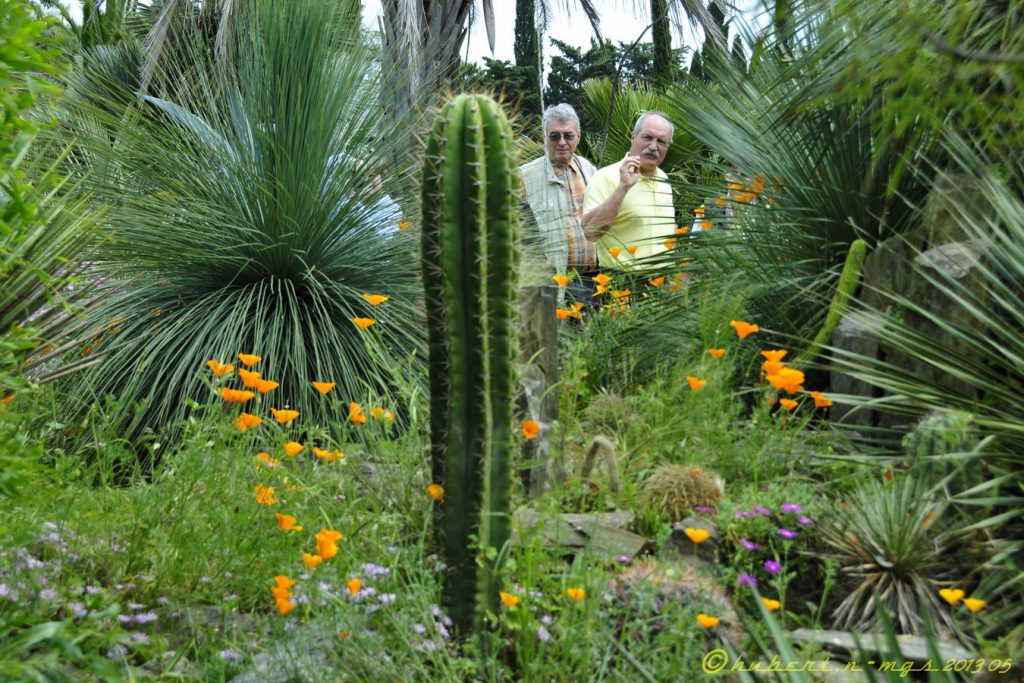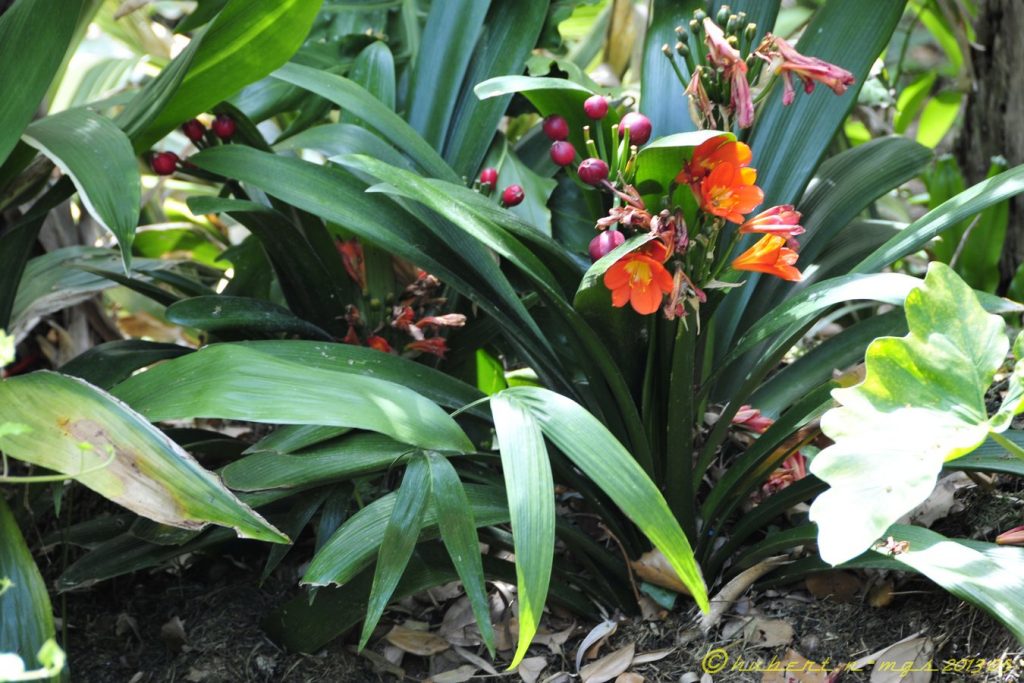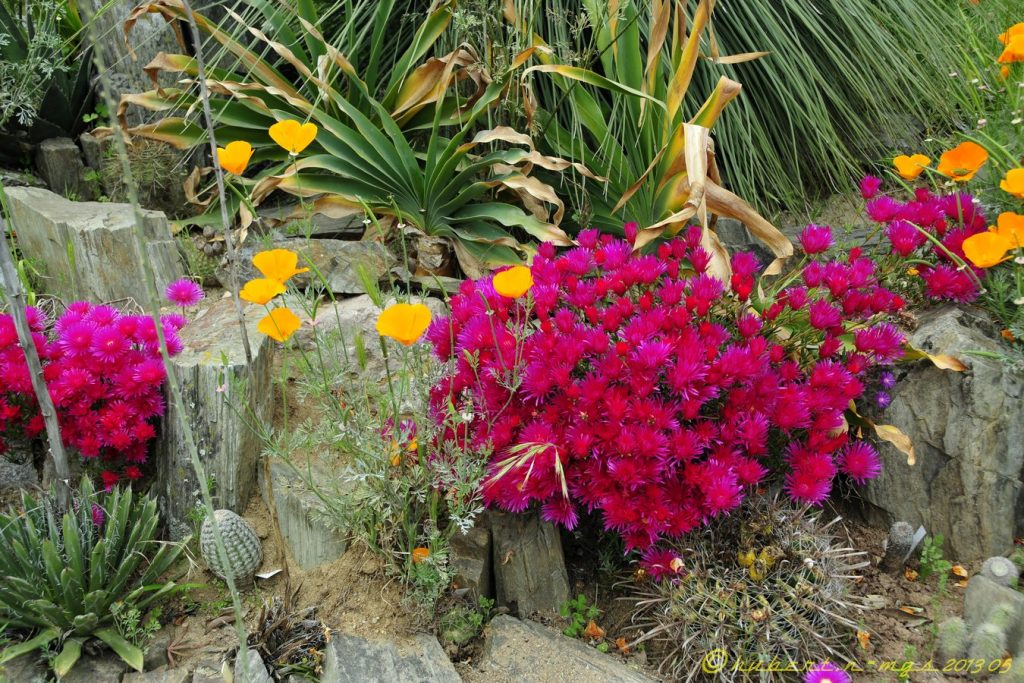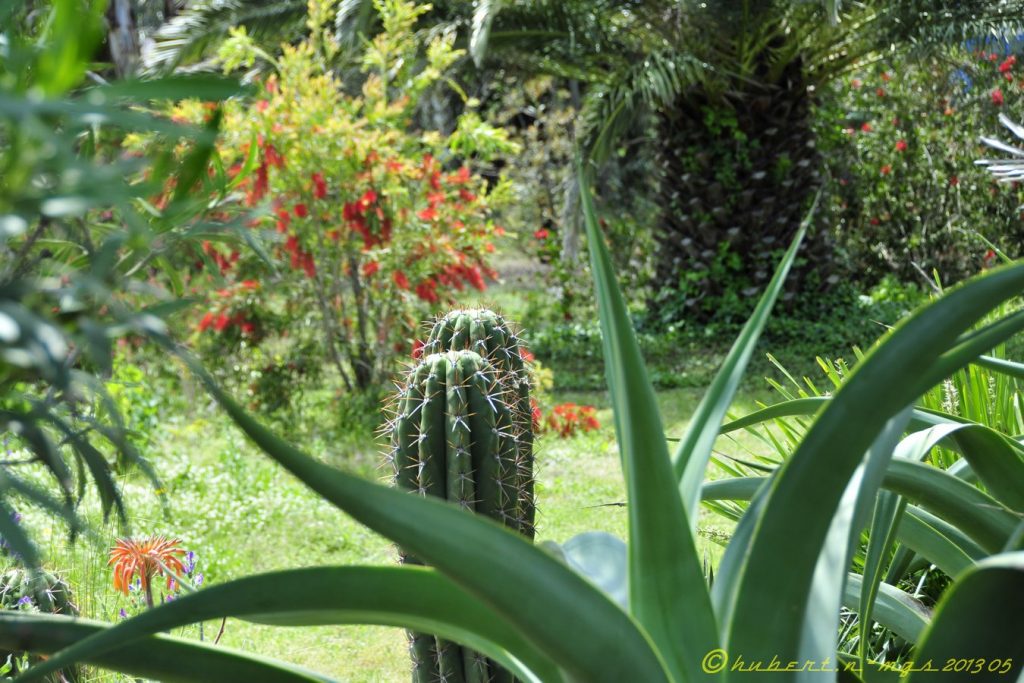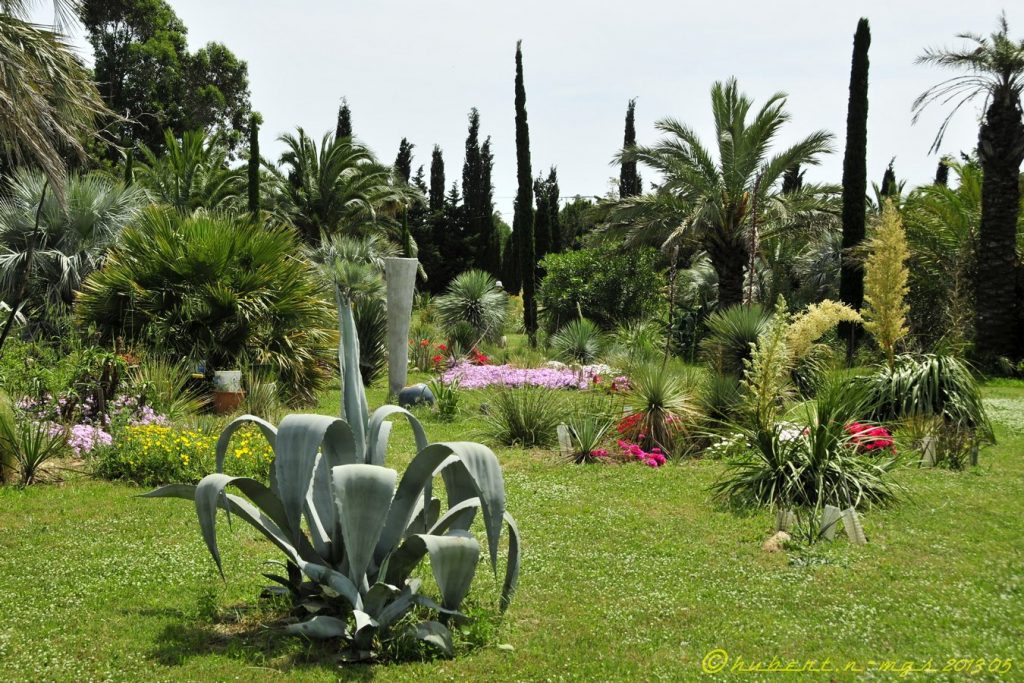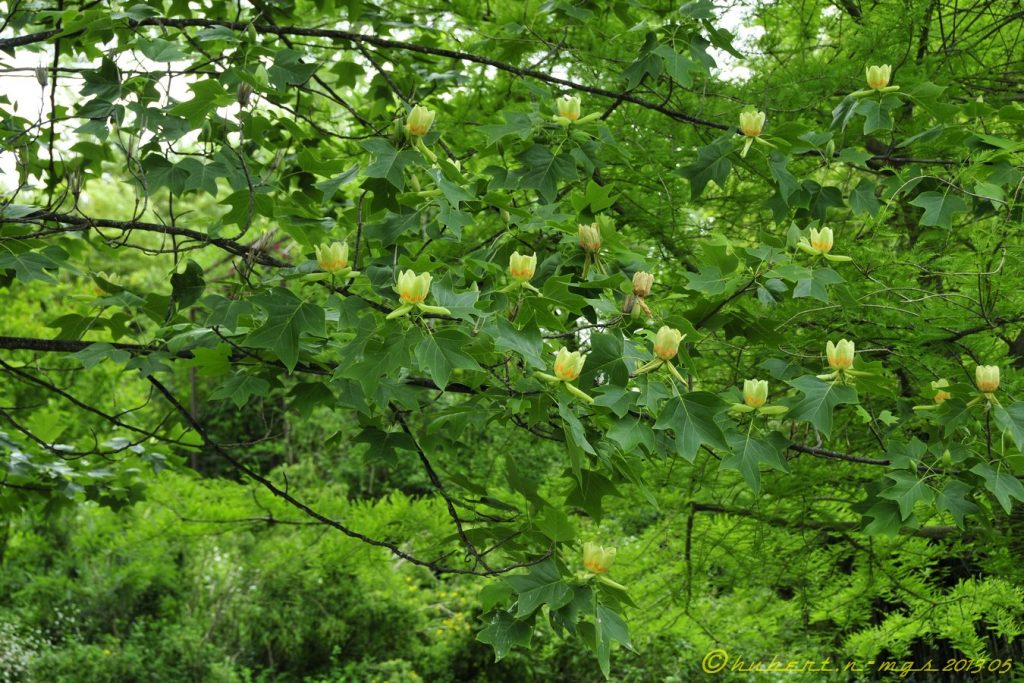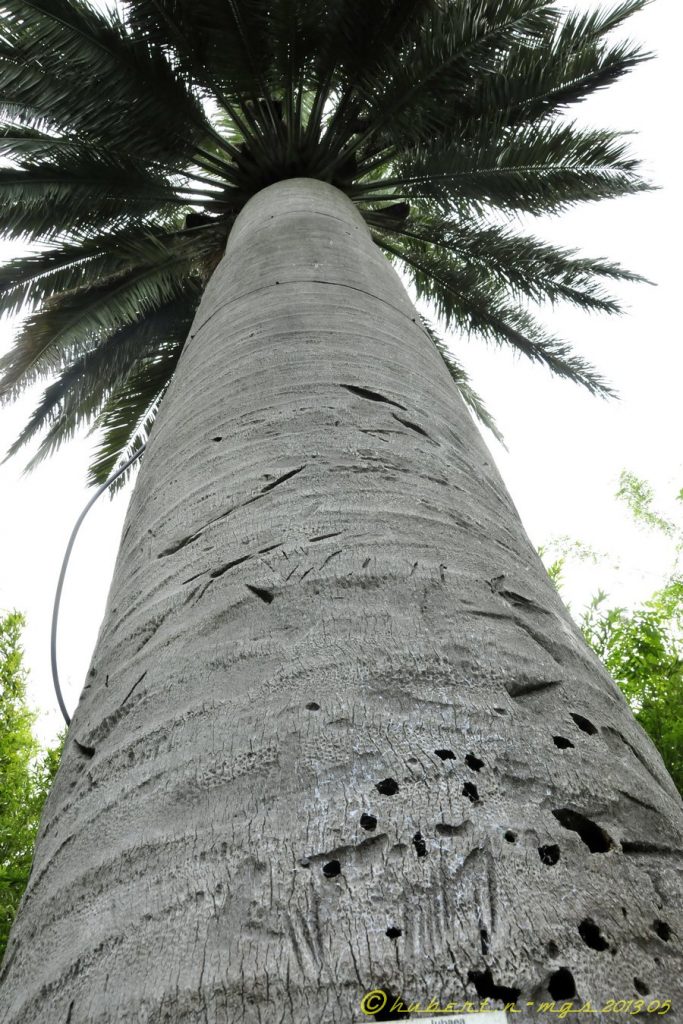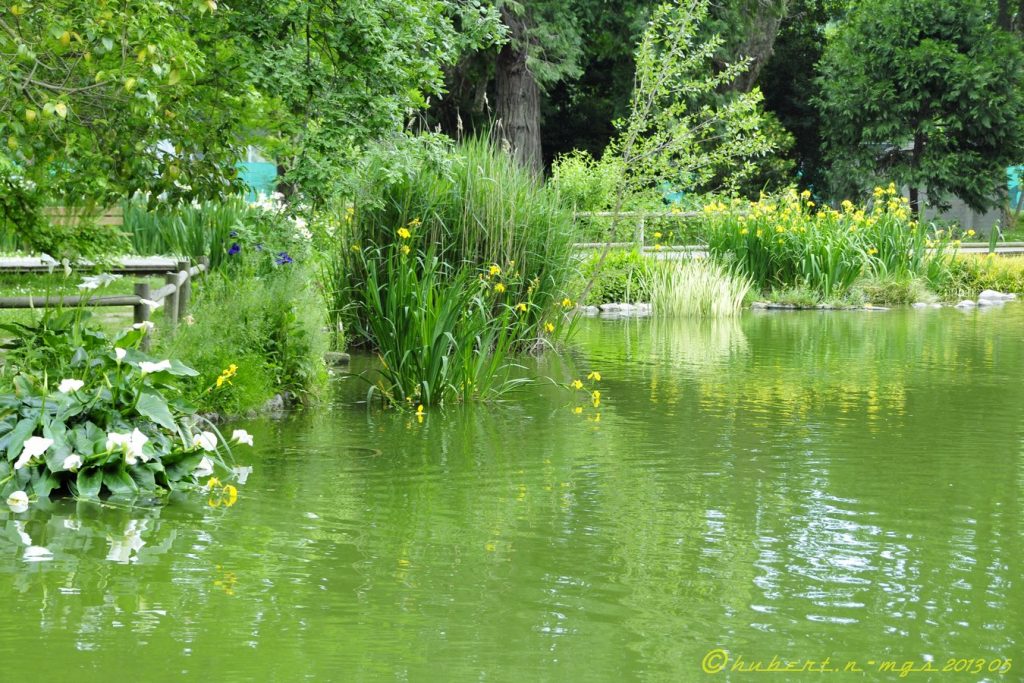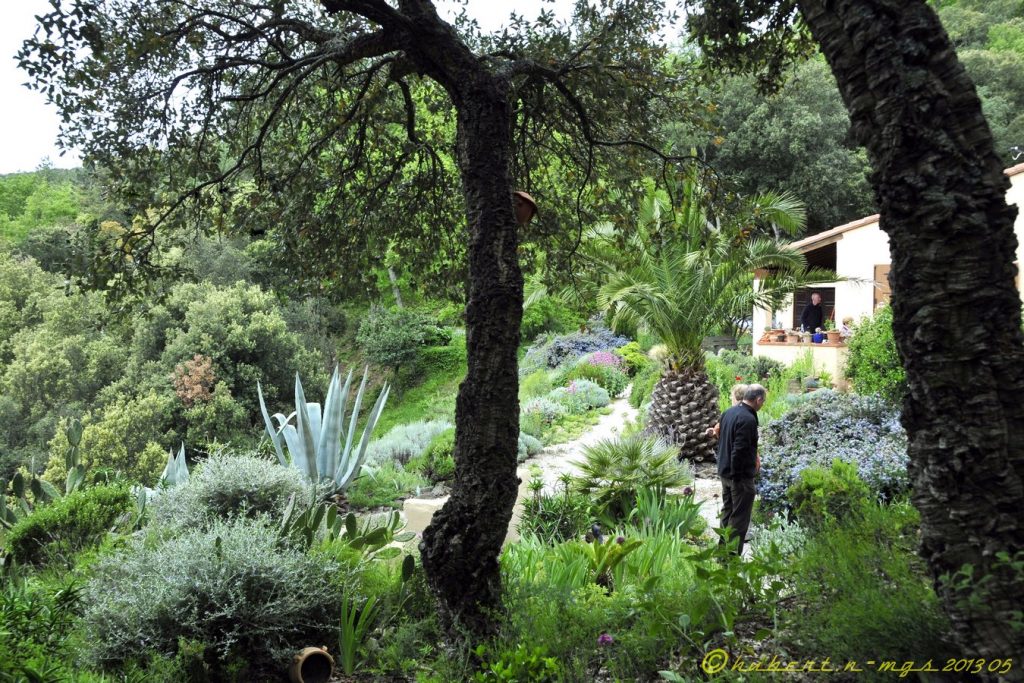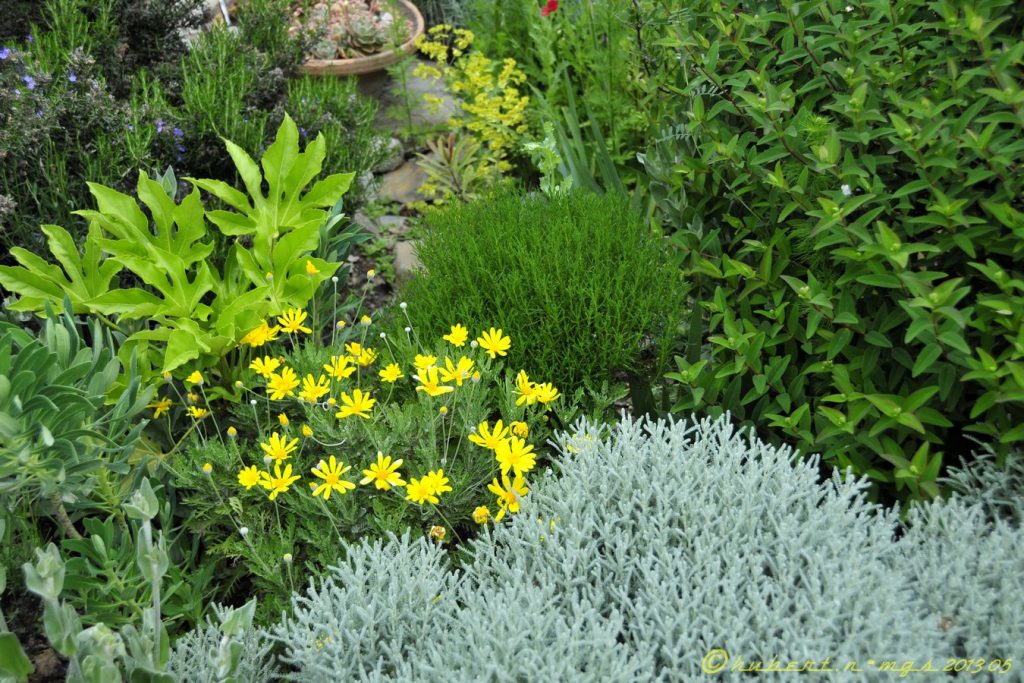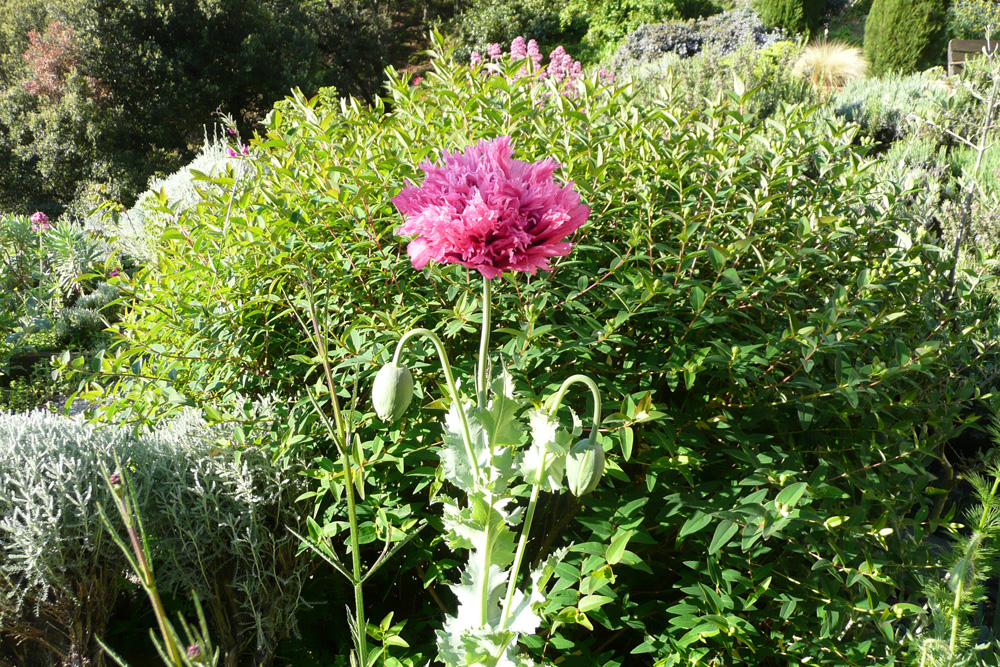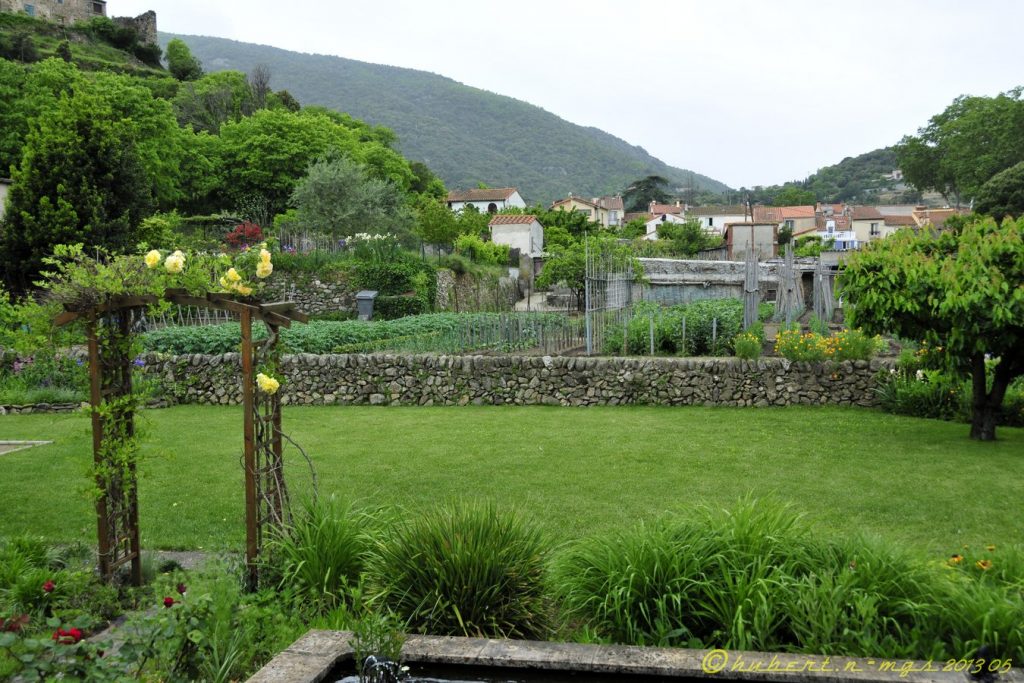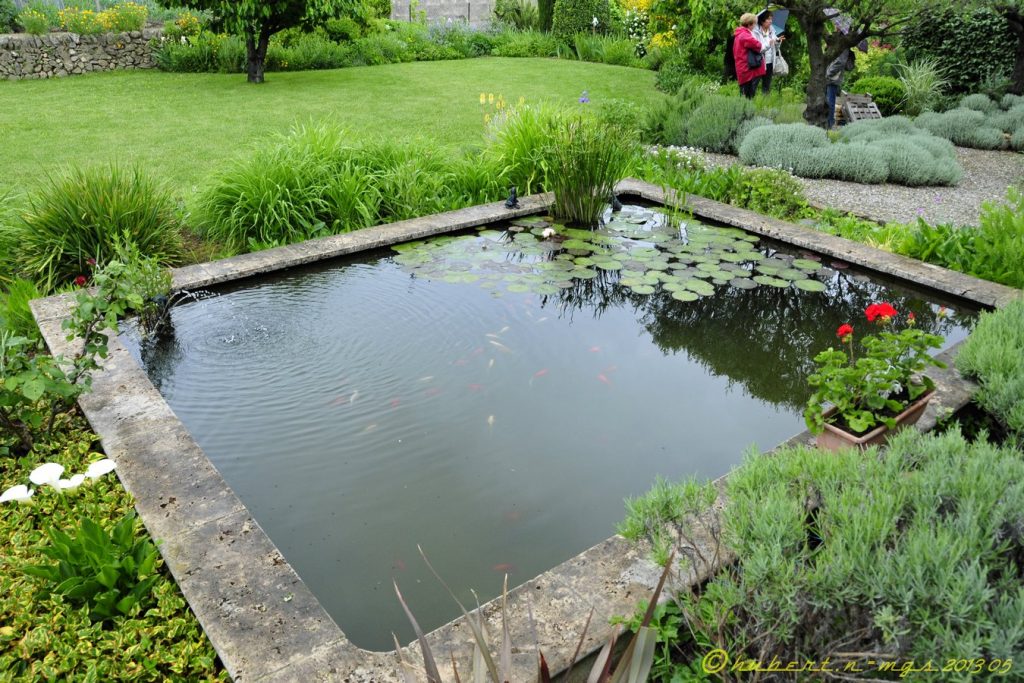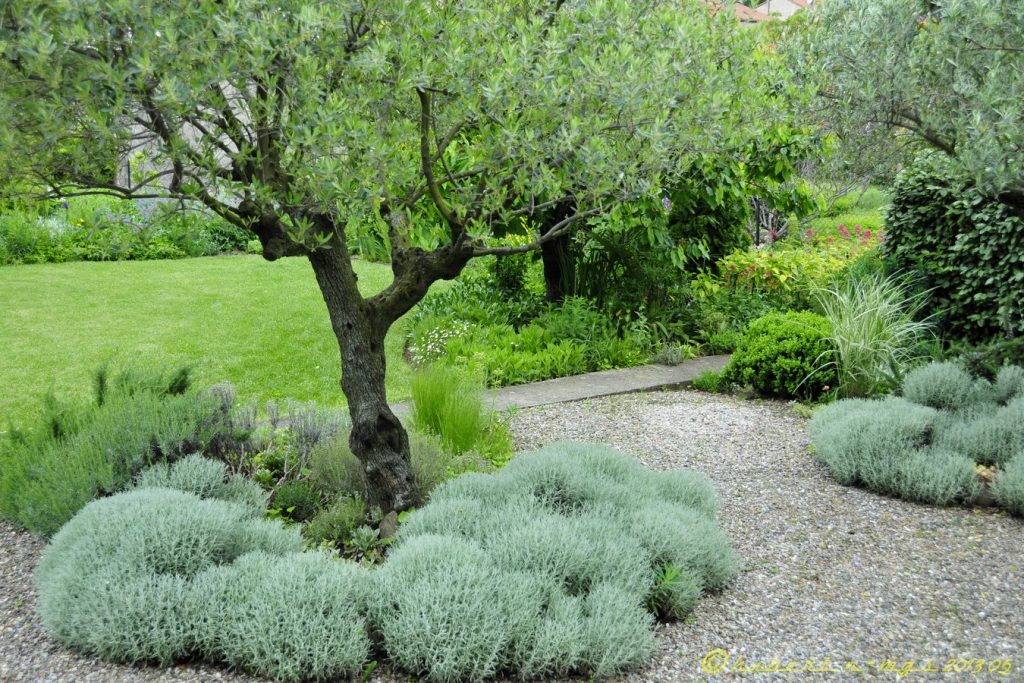May 2013 – Visits to Gardens in Pyrénées-Orientales
Click on the images to enlarge them / Cliquez sur les images pour les agrandir
Le jardin de Mas Reynes
A pleasantly warm mid-May afternoon gave members the opportunity to enjoy a picnic under the shade of the Mas Reynes palm trees.
Proud owner, Mr Pierre Bianchi, explained that as a horticulturalist based in Montpellier, he had searched for a long time to find a suitable location where he could indulge his interest in growing exotic plants. In 1993 he finally decided upon this corner of Roussillon, reputed to be the hottest part of France. Here, near the sea, a mild coastal climate and warm winds from North Africa enable tender plants to survive and thrive, despite the frequent drying winds of the tramontane.
Thanks to Pierre’s planting of a protective canopy, the previously agricultural plot now provides a hospitable environment for a variety of tropical and xerophytic plants from every continent, informally organised according to their geographic origins.
Chamaedorea palms and Yucca filifera from Central America flourish alongside phormiums and cordylines from New Zealand and ‘Iron Bark’ eucalyptus from Australia. From South Africa, bulb under-planting included crinums, agapanthus, clivias and the unusual Boophone disticha, one of the most poisonous plants in the world.
This is a collector’s garden, laid out to show each individual plant to advantage, with the stunningly bright flower colours set off against a variety of foliage shades and textures.
Text by Jane Claridge
Photos by Hubert Nivière
Le Jardin des Plantes Les Capellans, St Cyprien
Continuing the tropical theme, the next garden to be visited was the Jardin des Plantes Les Capellans, south of the seaside town of St Cyprien. This 5 hectare public garden began life at the end of 19th century as the grounds to a chateau built by the de Rovira family. Sadly, by the 1990s it had become abandoned and neglected, but was saved for the people of St Cyprien by their mayor, Dr Bouille, who rescued it from a repossession order.
Unusually for a Mediterranean area, azaleas and rhododendrons grow successfully here, and roses seem very happy in the environment. The maturity of this garden enabled visitors to appreciate fully-grown examples of ginko, sequoia, trachycarpus, liriodendron and one particularly statuesque specimen of Jubaea chilensis which is in a vulnerable state owing to pest attack.
Peacocks, both coloured and albino strutted around nonchalantly and an extensive bamboo forest further enhanced the jungle-like experience, with its towering graceful forms.
A garden of this importance is a rarity for a modest town of just 10,500 inhabitants and surprisingly the grounds were maintained by only 2.5 gardeners. It is to be hoped that the current economic climate will not endanger its future.
Text by Jane Claridge
Photos by Hubert Nivière
Private gardens in the foothills of the Pyrénées
As we wound our way up the mountain to our first garden, near Oms, on Wednesday morning, I was thankful to be a passenger, free to enjoy the views. Our hosts, members Lynn and Roger Hall, bought their piece of wooded hillside ‘on a whim’ some 24 years ago. Even after looking through the delightfully annotated photo albums it’s hard to imagine the work involved.
Protected by the hillside, yet open with magnificent views on one side where the land falls steeply away, the house and garden feel settled and peaceful. With little topsoil, no additional watering system and all the Languedoc weather extremes, Lynn has planned, planted and experimented over the years – and the result is lovely.
Wandering around the gravel paths I wondered why I felt so at ease in this particular garden and decided it was a reflection of the natural, easy away it was planted.
There are lots of grey leaved plants giving a soft background, interesting shapes from the cacti and palms, a splendid Phoenix canariensis with enough space around to show off, poppies, aquilegia, and larkspur giving colour in any space available, something different round each bend, each plant looking as if this was just where it should be.
Perhaps the relaxed feeling reflects the philosophy of the place, the way the many difficulties have been approached – if it’s too dry for compost then have a wormery, if the wild boar regard the bulbs as caviar then plant them in pots and if the pink frilled poppy is ousting the rubbish bin then of course it’s the bin that moves.
Several of us came away with seeds and I’m hoping for larkspur and pink poppies to remind me of a happy morning.
It was to be a morning of contrasts. Back down the mountain and in the small town of Céret, opening the gate to Paula Frey’s garden, we found ourselves in a green oasis.
Imagine being able to buy a house with its own irrigation canal supplying water throughout the year at minimal cost. About ten years ago, Paula and her husband did just that. A channel running down one side of the garden, built in the 18th century after the traditional style introduced by the Moors, brings water from the river to Paula’s and neighbouring potagers.
Her husband’s ingenuity resulted in an attractive pond near the house which is home to decorative fish and water lilies and also supports a watering system for lawn and flower beds.
The mechanism was beyond me but I gathered that the changes in water level are not great enough to upset fish or plants and that a small fountain maintains aeration and deters mosquitoes. The result of all this water is luxuriant late spring foliage, plenty of colour already and clearly plenty more to come.
Much knowledge and care has gone into the planting and managing. I can imagine sitting on the terrace enjoying a pleasing variety of views: shapely santolinas bordering a gravel path in front of olive trees as a reminder of the outer world, the charming effect of the pool with an attractive variegated low shrub edging, then, beyond the herbaceous border, the promise of good eating from the riches of the well managed potager.
These were two lovely gardens that I could have stayed in much longer. Coming back home to a sea of weeds I was encouraged to remember that both Paula and Lynn had said their gardens have never looked so tidy – another good reason for visits.
Text by Jenny Ritchie
Photos by Hubert Nivière
![]()


